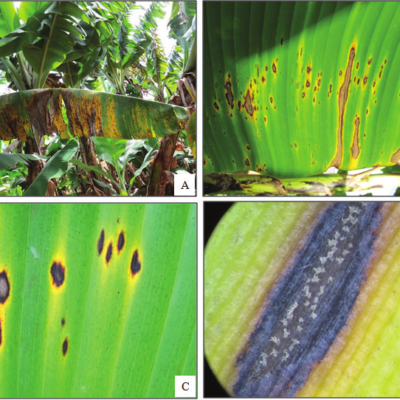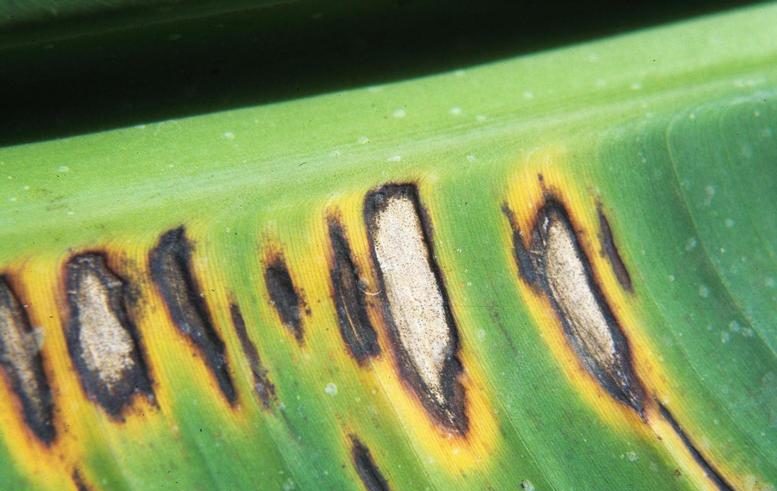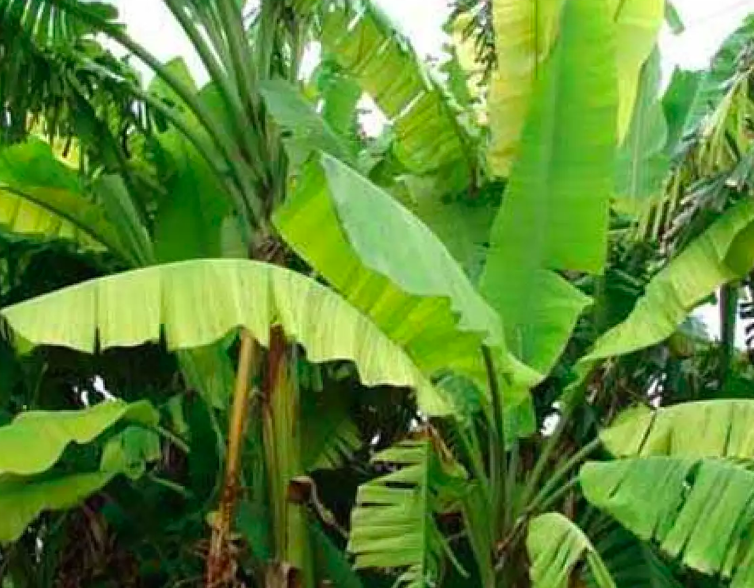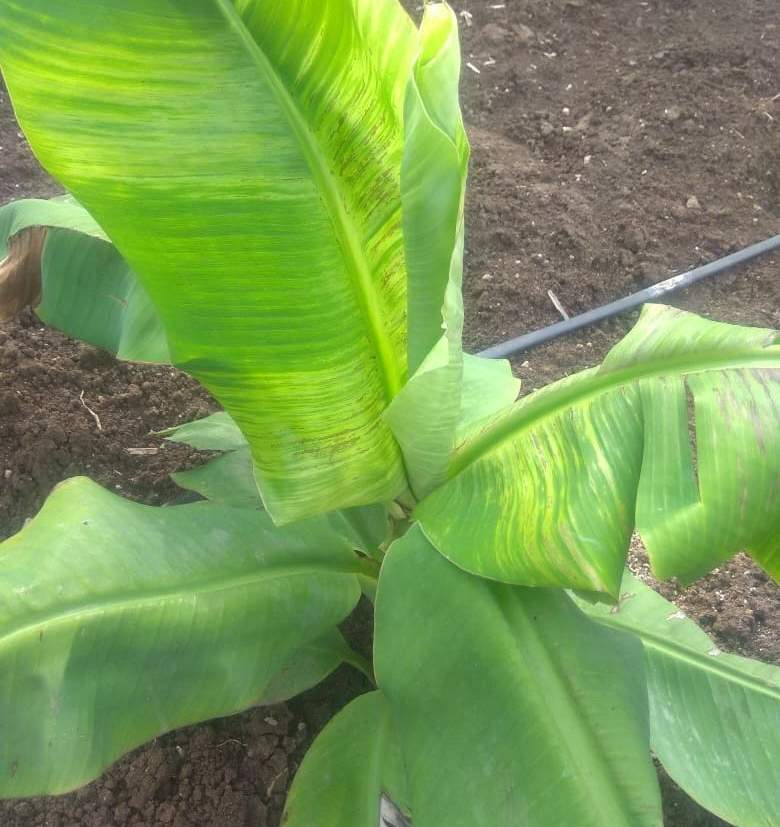Among diseases caused by fungi, the leaf spot (Sigatoka) caused by Mycosphaerella fijiensis (Black Sigatoka), and M.musicola (Yellow Sigatoka), and M.eumusae (Septoria leaf spot), are considered to be the most serious. Recently Septoria leaf spot has also been recorded to cause significant loss.
Damage:
- Severely affected areas is unsuitable for export because of the shortened shelf life.
- The quality of banana is drastically reduced.
- Small fingers, premature ripening and feel splitting are associated with the disease.
- Bunches are harvested from affected orchards ripens during transit.
Symptoms:
The earliest visible symptoms of Sigatoka are light green, narrow speck of about 1 mm in length on the upper surface of the older leaf. The infected tissue then turns brown and dies. The extensive defoliation results in delayed flowering, reduction in number of hands and fingers. Peel spitting and premature ripening are also associated with the disease.
Reasons for the high disease severity-
- Closer spacing (1.25 x 1.25 m)
- Lack of timely fungicidal sprays
- No proper regular field sanitation
- Poor drainage
- Lack of crop rotation
- Plantation of banana round the year
Mode of spread-
- Through the movement of plants containing infected leaves.
- Through wind borne inoculums of the fungus
- The diseased leaves are used to wrap banana bunches and packing material
- Short distance spread is by wind and water borne conidia. To get normal yield, there should be
- Minimum 17 to 20 green leaves during vegetative phase (6 months after planting),
- 12 to 15 green leaves during shooting/ flowering phase and
- 7-10 leaves at the time of harvest
Preventive Measures-
- Planting of banana strictly in the recommended month i.e. June and October.
- Planting of banana at the recommended spacing (1.5×1.5 m)
- Apply recommended doses of manures and fertilizers.
- Spraying of fungicide before the onset of monsoon.
Regular field sanitation-
- Planting of banana strictly in the recommendation month i.e. June and October.
- Suckers should be removed in time.
- The drainage system should be proper; water logging will increase the humidity which favours infection.
- Chemical control is the only option; it consists of fungicide and mineral oil combination. Spray of banana plantation with 1% petroleum oil + half the dose of recommended fungicides Spray schedule * 1st Spray- Banole oil 1% +0.5 g of Carbendazim/ litre of water 2nd Spray- Banole oil 1% +0.5 g of Companion / litre of water 3rd Spray- Banole oil 1% +0.5 g of Carbendazim + 0.5 ml of calixin / litre 4th Spray- Banole oil 1% + Propiconazole 0.5 ml/ litre of water 5th Spray- Banole oil 1% +0.5 g of Carbendazim / litre of water 6th Spray- Banole oil 1% + Propiconazole 0.5 ml/ litre of water 7th Spray- Banole oil 1% + 0.5g of Carbendazim/ litre of water 8th Spray- Banole oil 1% + Propiconazole 0.5 ml/ litre of water







